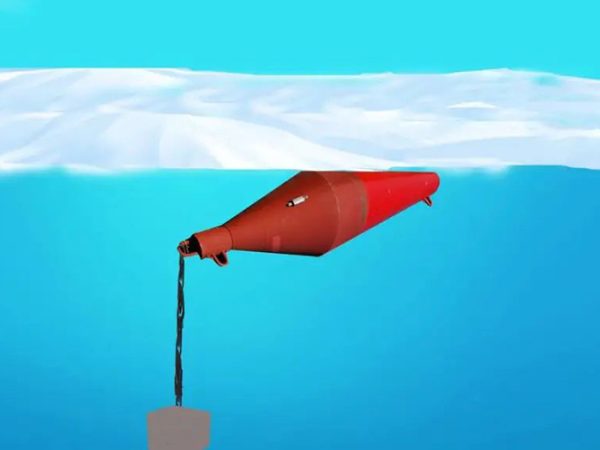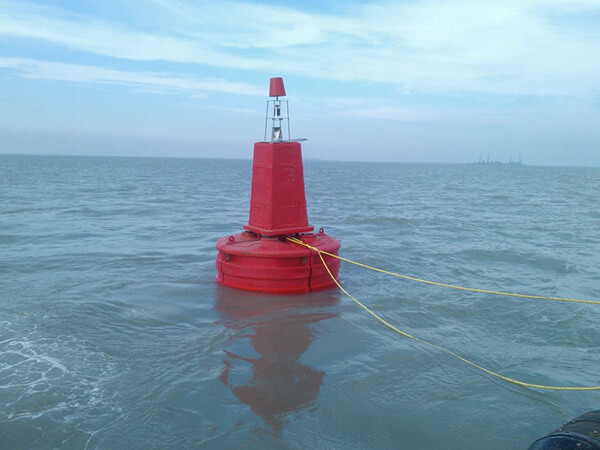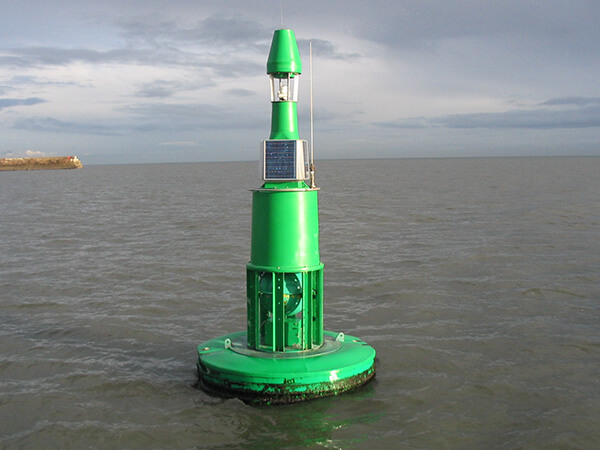Why do we need to replace Navigation Buoys in winter?
Date:2023-12-12
Affected by the cold air in winter, the sea surface will freeze in winter. Sea ice, along with tsunamis, storm surges, disaster waves and red tides, are known as the five major ocean hazards. Its destructive power is mainly manifested in the huge thrust generated by wind and currents, and the huge squeezing force caused by the expansion of sea ice. A piece of ice that is 6 square kilometers in size and 1.5 meters thick can have an impact force of up to 4,000 tons if the flow rate is not too high.

Conventional navigation buoys cannot withstand such destructive power of sea ice. Although conventional navigation buoys are usually equipped with a 4-5 ton sunken rock at the bottom to prevent them from deviating from the marked position, the huge thrust of sea ice will cause the anchor chain connecting the navigation buoys to the sunken rock broke. The expansion force of sea ice is also particularly amazing. It can squeeze and deform conventional light buoys frozen by ice, causing the buoys to break and flood. When the sea water temperature drops to -1.5°C, a 1,000-meter-long sea ice can expand by 0.45 meters.
In order to avoid the effects of sea ice, ice buoys must be replaced every year before the ice age begins. Conventional navigation buoys are replaced with ice buoys with better ice resistance to ensure safe navigation of ships.
Ice buoys mainly have the following characteristics:
First, the structure is strong and the stress-bearing area is small. The conical structure of the upper part of the ice mark can reduce the expansion pressure of the sea ice, and its smaller stress area can effectively reduce the frontal thrust of the sea ice. We can often see a long tail trailing behind the ice mark on the sea surface in winter. That’s because after the drift ice is separated by the ice mark, a narrow “ice-free zone” will appear, just like the ice mark “sailing” in the sea ice.

The second is to be able to “hide” and avoid its sharp edges. When a large area of sea ice hits, or the sea surface is severely frozen, the structure of the ice mark can ensure that it is hidden under the ice. When the large sea ice floats away with the current, it can break out of the ice again. The upper part of the ice mark has high strength and good water resistance, so even if it is hidden under the ice, it can still be protected from damage.
Next: Delivery of 104 sets of Φ400 cylindrical fenders
RELATED
- Types of pneumatic rubber fenders you should know
- 800H cell rubber fenders fly to Saudi Arabia
- Difference between Gross Tonnage, Net Tonnage, and Deadweight Tonnage
- Portugal Tender – Northern Fishing Port Maintenance Dredging
- ID750 dredging hoses and bow floaters for TSHD were delivered
- New shipment of ID500 discharge rubber hoses for dredging
- Effective Ship Anchoring: Key Steps for Stability and Safety
- Sweden Tender – Quay front reinforcement & rubber fenders replacement at Norrköping harbor



